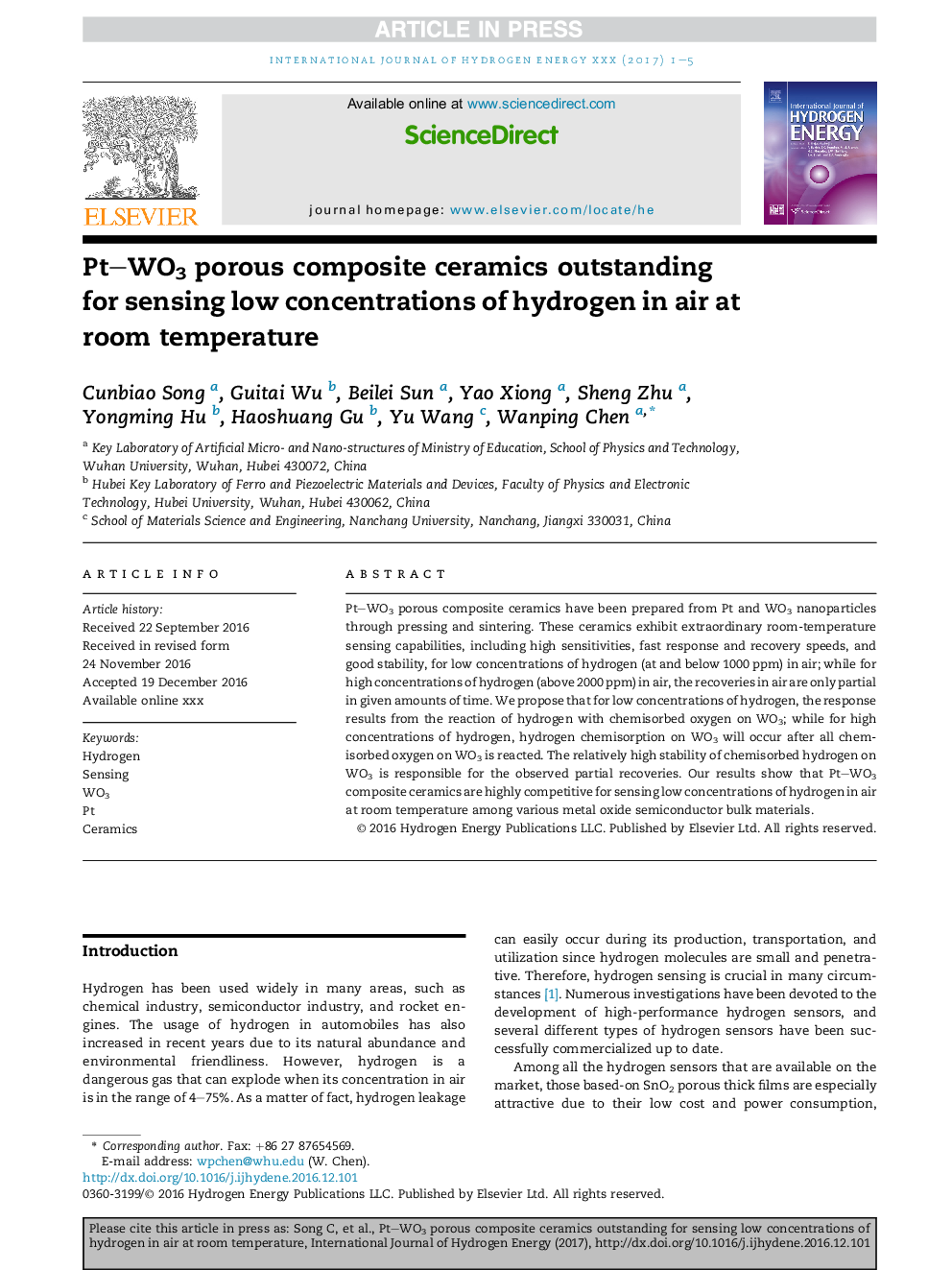| Article ID | Journal | Published Year | Pages | File Type |
|---|---|---|---|---|
| 5146849 | International Journal of Hydrogen Energy | 2017 | 5 Pages |
Abstract
Pt-WO3 porous composite ceramics have been prepared from Pt and WO3 nanoparticles through pressing and sintering. These ceramics exhibit extraordinary room-temperature sensing capabilities, including high sensitivities, fast response and recovery speeds, and good stability, for low concentrations of hydrogen (at and below 1000Â ppm) in air; while for high concentrations of hydrogen (above 2000Â ppm) in air, the recoveries in air are only partial in given amounts of time. We propose that for low concentrations of hydrogen, the response results from the reaction of hydrogen with chemisorbed oxygen on WO3; while for high concentrations of hydrogen, hydrogen chemisorption on WO3 will occur after all chemisorbed oxygen on WO3 is reacted. The relatively high stability of chemisorbed hydrogen on WO3 is responsible for the observed partial recoveries. Our results show that Pt-WO3 composite ceramics are highly competitive for sensing low concentrations of hydrogen in air at room temperature among various metal oxide semiconductor bulk materials.
Related Topics
Physical Sciences and Engineering
Chemistry
Electrochemistry
Authors
Cunbiao Song, Guitai Wu, Beilei Sun, Yao Xiong, Sheng Zhu, Yongming Hu, Haoshuang Gu, Yu Wang, Wanping Chen,
